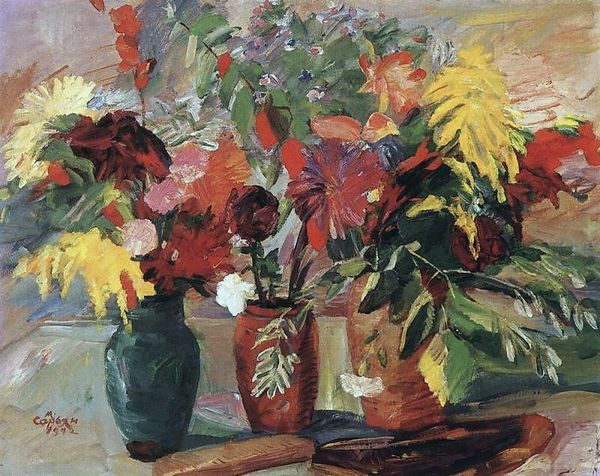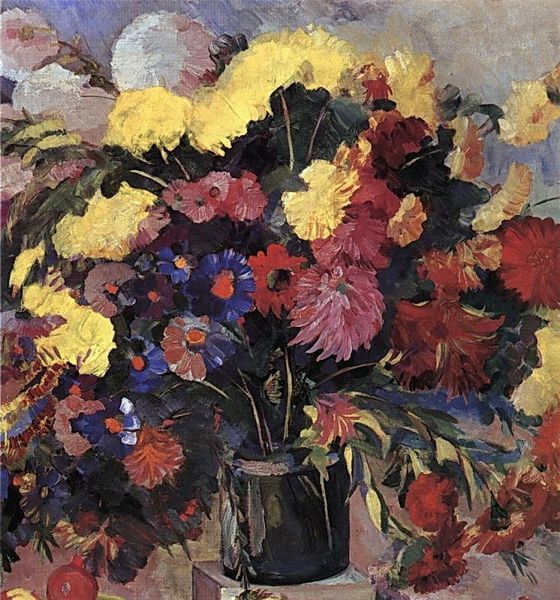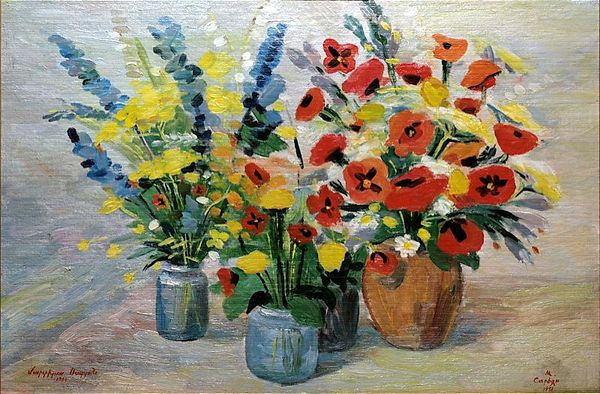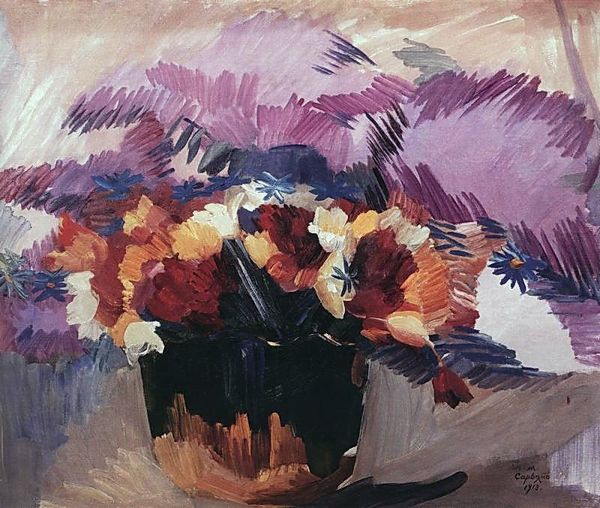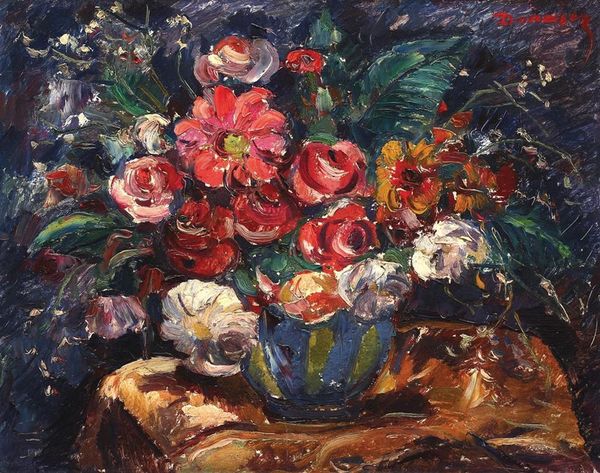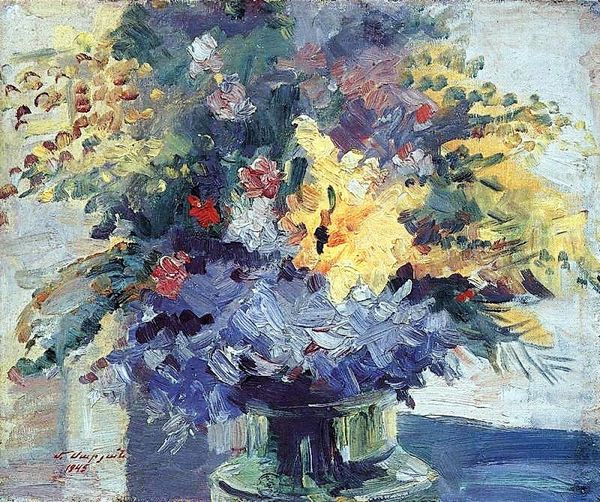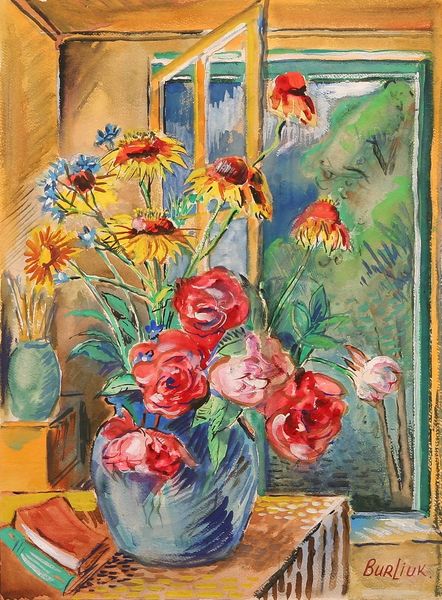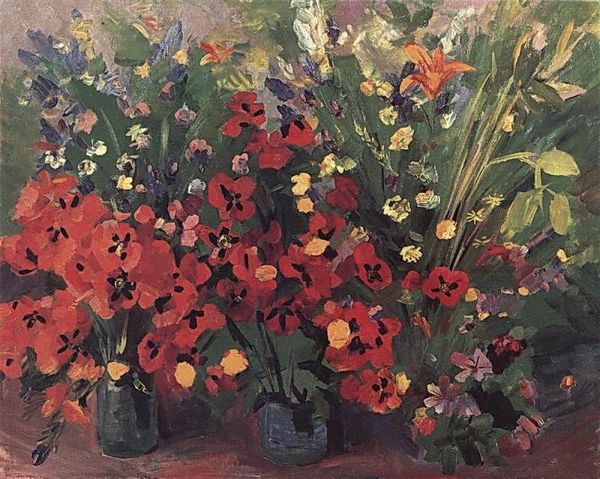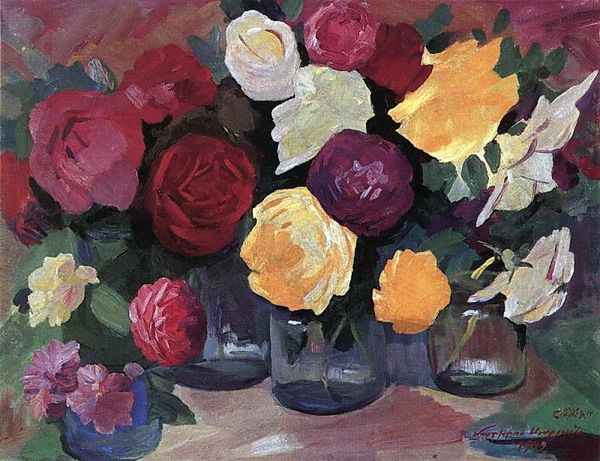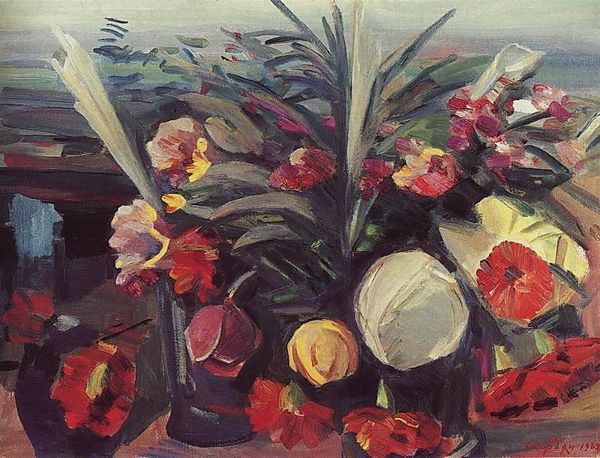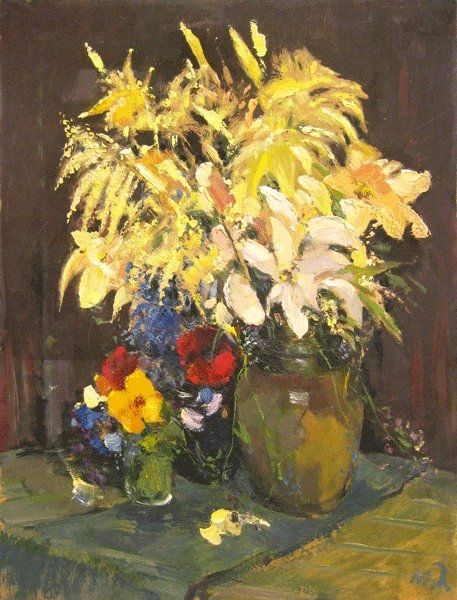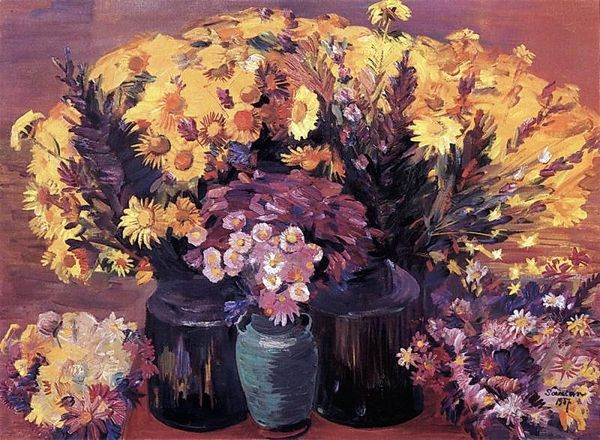
Copyright: Martiros Sarian,Fair Use
Curator: This effusive still life is called "Flowers of Stepanavan". It was painted by Martiros Sarian in 1950 using oil paint. It is a painting of cut flowers arranged into three different vases. Editor: Immediately, the intense palette strikes me. It feels exuberant, like a celebration of life. I wonder what the flowers themselves might represent. Curator: Stepanavan, located in Armenia, would have been a specific and meaningful location for Sarian, representing a homeland deeply connected to his identity as an Armenian artist working during the Soviet period. The choice to depict it through its flowers offers a subtle statement about cultural pride and enduring beauty amidst political realities. Editor: Indeed, flowers themselves can signify so many things: love, loss, the ephemeral nature of beauty. The sheer volume and variety suggest abundance and possibly also remembrance. Looking closely, there seems to be a symbolic weight in the selection of blooms. The specific varieties could refer to Armenia's landscapes or folklore. Curator: Sarian, who studied in Russia, found himself deeply influenced by the impressionistic and post-impressionistic styles prevalent in Europe at the time. Upon his return, he really grappled with translating those styles into an explicitly Armenian context, a visual vocabulary suitable for his homeland. We could look at how Sarian negotiates between the established, the French schools and the need to express unique regional content. Editor: And in doing so, he creates an interesting tension between the universal language of flowers and the specificity of place. Are the shapes simplified, almost abstracted? In this case the symbolism could also extend to that flattening. Curator: The brushstrokes are remarkably loose, particularly in the floral arrangements themselves, contributing to the vibrancy, while in the vase arrangements and their horizontal placement upon a surface grounds the painting, giving us visual stability, an opportunity for cultural grounding. Sarian created a lot of landscape and nature studies during the mid century, particularly through the official support structures of Soviet art institutions. I feel this painting must have acted to reassert regional identity within an authoritative visual culture. Editor: A fascinating blend of artistic influence and personal narrative then. Curator: I’m interested how such an expressive painting operated in the public life of Armenian culture under the Soviets. Editor: And for me, this vibrant canvas reminds us of the silent power of flowers, as both symbols and potent evocations of place and time.
Comments
No comments
Be the first to comment and join the conversation on the ultimate creative platform.
